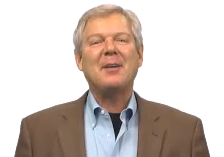Traditional versus digital: Why does it even matter?
Traditional media has met its match with the advent of digital, and the advertisers have been weighing out the pros and cons for each medium to make spending decisions ever since. Media players however, are now saying the debate should stop because at the end of the day, content is king.
Havas Group Singapore’s chief executive officer, Jacqui Lim said that contrary to popular beliefs, the first steps for her team after receiving a brief and budget from the client is not to build a media plan and decide which channels. Instead, a lot of planning goes into optimising metrics and understanding what hits the right key performance indicators. This is driven by clients’ expectation for the agency to look at things in an integrated, platform-agnostic and audience-centric fashion.
To decide on the right medium, there are several dimensions to consider, Lim said. For example,
Clients believe in a much more trackable and attributable kind of platforms, but the traditional or broadcast media comes in to help us amplify.
Rather that choosing traditional “or” digital, general manager of Unilever Singapore Banjo Castillo advises that advertisers shift their mindsets to “and”, and move the conversation towards how they can make the best use of finite resources.
With consumer journeys crossing not just media platforms but different screens as well, Castillo said that the company is focused on building its data-driven capabilities to boost campaign efficiency. This includes precision and performance marketing.
Havas’ Lim suggested a more unified currency for traditional and digital media buys, where television goes programmatic, and measurement and targeting are as transparent as that of digital. She added that making interaction and engagement metrics possible will also assure clients that they are making meaningful connections with their customers.
Understanding consumers
Additionally, the panellists at the event hosted by Mediacorp urged marketers to focus on effective storytelling as content is what matters to people and catches their attention. Ajay Vidyasagar, regional director, YouTube partnerships, who had previously also spent almost two decades in the television industry, said that digital has not only changed the way viewers consume, but allowed people to create content as well. This was what led to a surge of users on YouTube. He added,
“The walls between digital and traditional media are truly breaking. Consumers want content when they want it, in a form that they are able to consume, on a device they are comfortable reaching out to at that moment.”
Meanwhile, Castillo said that marketers can leverage digital to craft messages and develop products tailored to customers’ wants and needs. Digital has for instance, changed the way Unilever gets to know its customers.
He added, “When we do consumer research, it takes three to six months to come in, before we even get to analyse it. Now, through the power of digital, we can actually do social listening, and learn about consumers on the fly.”
by Avelyn Ng Courtesy the MARKETER






